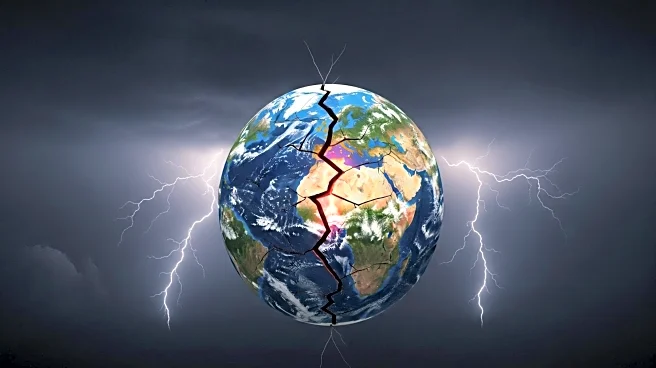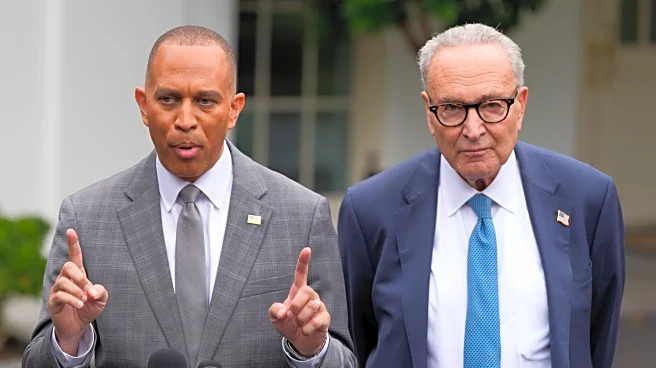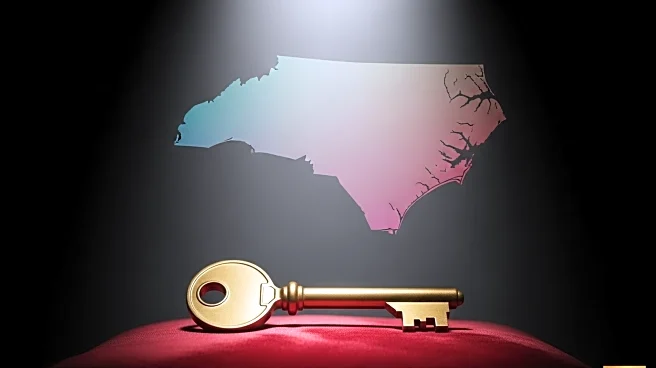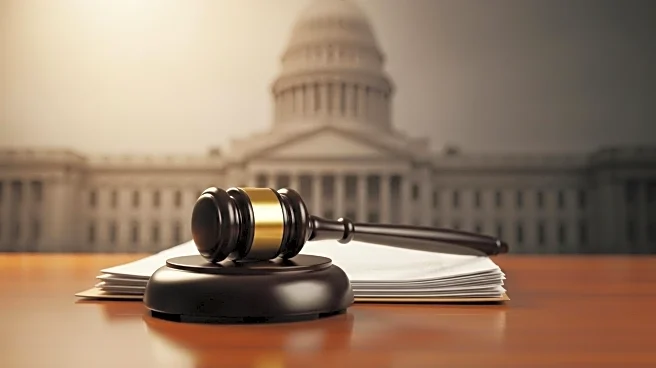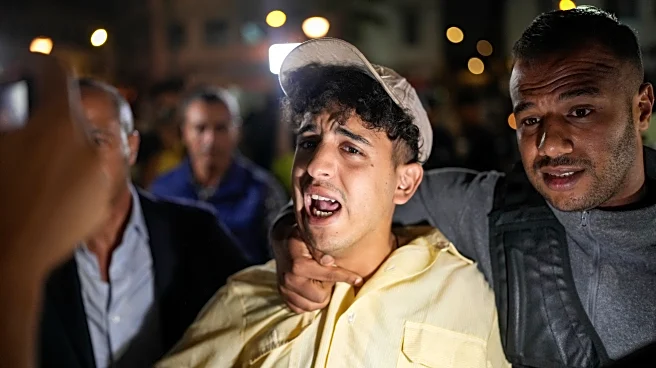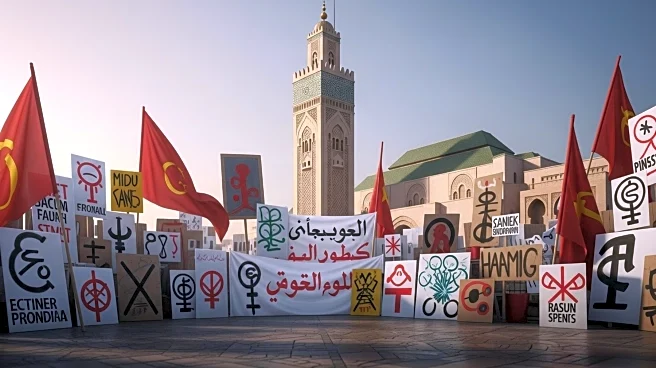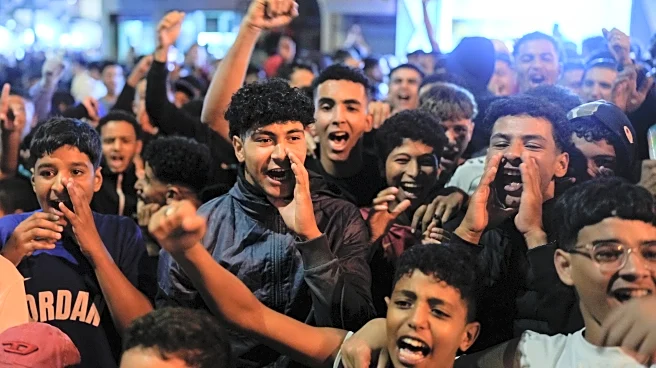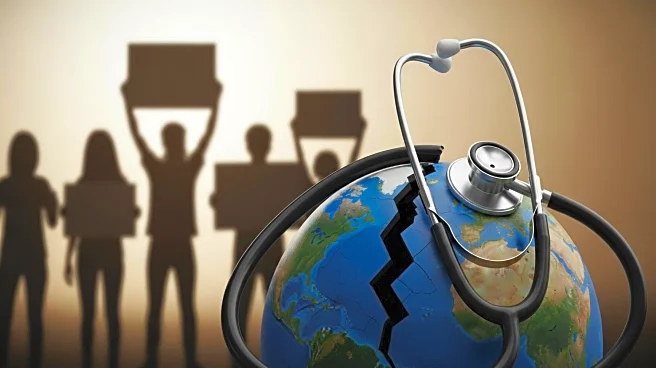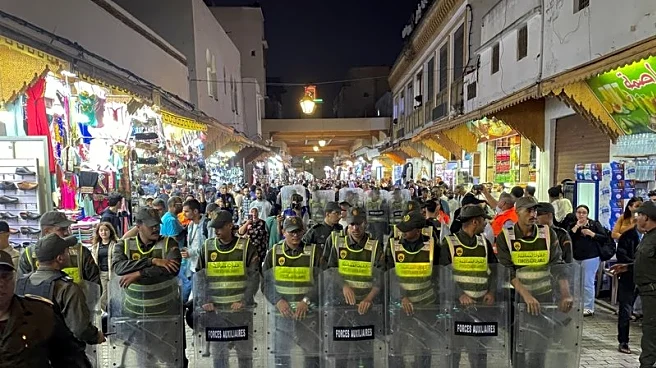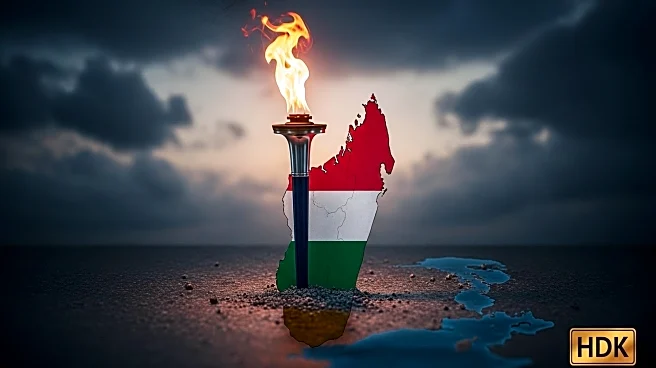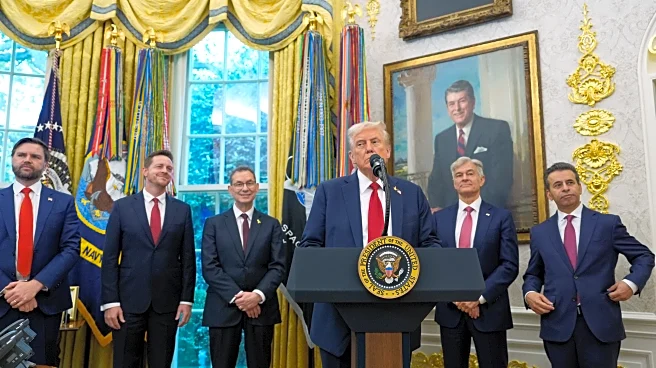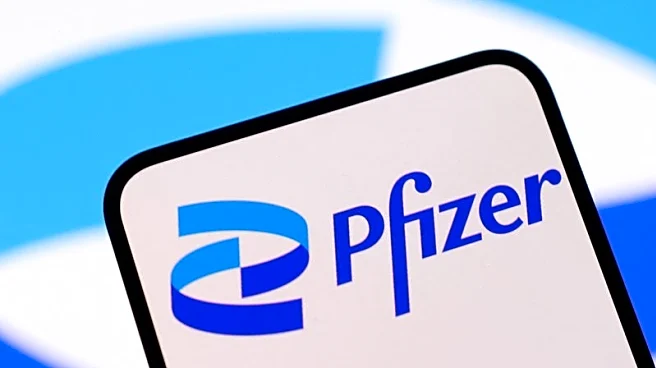What is the story about?
What's Happening?
In Morocco, anti-government protests have intensified, resulting in the deaths of two individuals in the town of Leqliaa. The protests, which have been ongoing for five nights, are driven by public dissatisfaction with government spending priorities, particularly the allocation of funds towards infrastructure for the 2030 World Cup, while public services like healthcare and education remain underfunded. The protests, led by a leaderless movement of internet-savvy youth, have spread across the country, with demonstrators expressing anger over corruption and inadequate public services.
Why It's Important?
The protests in Morocco highlight significant social and economic issues, including corruption and the disparity in government spending. The unrest reflects broader dissatisfaction with the government's priorities, which many citizens feel neglect essential services in favor of high-profile projects. This situation underscores the challenges faced by governments in balancing development with public welfare, particularly in regions with stark inequalities. The protests could have implications for Morocco's political stability and may influence future policy decisions regarding public spending and governance.
What's Next?
As protests continue, the Moroccan government faces pressure to address the demonstrators' demands. The Interior Ministry has stated that the protests are unauthorized and has responded with arrests, which may further fuel public anger. The government is expected to discuss healthcare and hospital reforms in an upcoming parliamentary meeting. The outcome of these discussions and the government's response to the protests will be critical in determining the future trajectory of the unrest and its impact on Moroccan society.
Beyond the Headlines
The protests in Morocco are part of a larger trend of youth-led movements globally, where younger generations are increasingly vocal about their dissatisfaction with government policies. This movement, driven by platforms like TikTok and Discord, reflects a shift in how political activism is organized and mobilized. The use of digital platforms allows for rapid dissemination of information and coordination, presenting new challenges for governments in managing dissent and addressing the concerns of a digitally connected populace.
AI Generated Content
Do you find this article useful?
